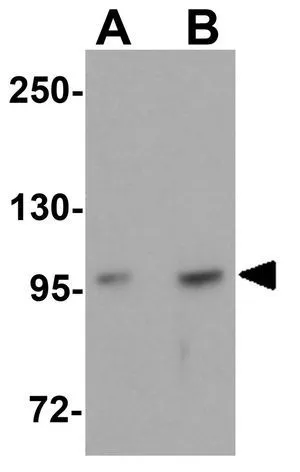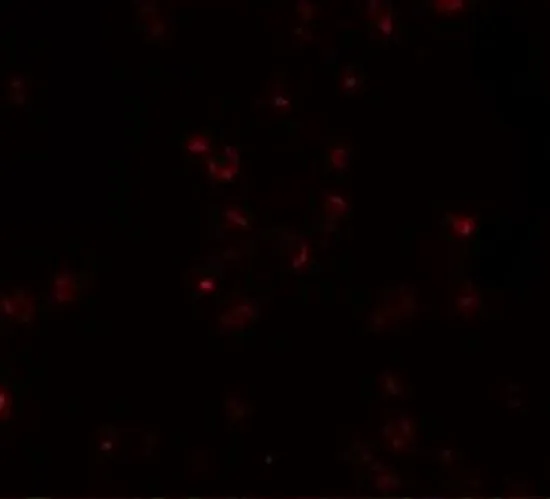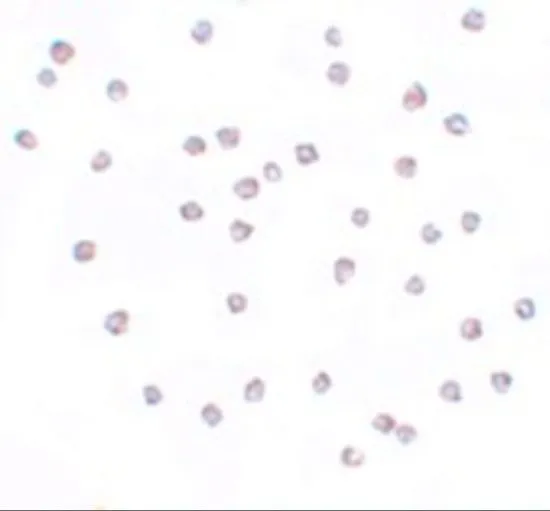
WB analysis of A-20 cell lysate using GTX85004 FREM2 antibody. Working concentration : (A) 0.5 and (B) 1 microg/ml
FREM2 antibody
GTX85004
ApplicationsImmunoFluorescence, Western Blot, ELISA, ImmunoCytoChemistry
Product group Antibodies
ReactivityHuman, Mouse
TargetFREM2
Overview
- SupplierGeneTex
- Product NameFREM2 antibody
- Delivery Days Customer9
- Application Supplier NoteICC/IF: 20 microg/mL. *Optimal dilutions/concentrations should be determined by the researcher.Not tested in other applications.
- ApplicationsImmunoFluorescence, Western Blot, ELISA, ImmunoCytoChemistry
- CertificationResearch Use Only
- ClonalityPolyclonal
- Concentration1 mg/ml
- ConjugateUnconjugated
- Gene ID341640
- Target nameFREM2
- Target descriptionFRAS1 related extracellular matrix 2
- Target synonymsCRYPTOP; ECM3 homolog; FRAS1 related extracellular matrix protein 2; FRAS1-related extracellular matrix protein 2; FRASRS2
- HostRabbit
- IsotypeIgG
- Protein IDQ5SZK8
- Protein NameFRAS1-related extracellular matrix protein 2
- Scientific DescriptionFREM2 is a member of the FRAS1-related extracellular matrix protein family and like FREM1, mutations in the FREM2 gene are associated with Fraser syndrome. FREM2 localizes to the basement membrane, forming a ternary complex that plays a role in epidermal-dermal interactions during morphogenetic processes and is thought to be required for maintaining the integrity of the skin epithelium and the differentiated state of renal epithelia. The FREM2 gene is one of several genes whose transcription is affecteded by TFAP2C, a transcription factor involved in mammary development, differentiation, and oncogenesis.
- ReactivityHuman, Mouse
- Storage Instruction-20°C or -80°C,2°C to 8°C
- UNSPSC12352203


